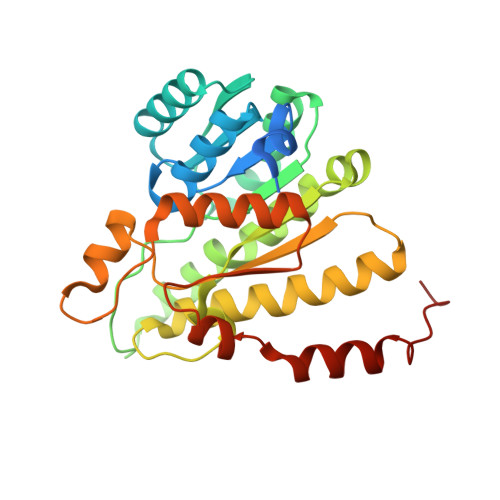Free-Wilson and Structural Approaches to Co-Optimising Human and Rodent Isoform Potency for 11Beta-Hydroxysteroid Dehydrogenase Type 1 (11Beta-Hsd1) Inhibitors
Goldberg, F.W., Leach, A.G., Scott, J.S., Snelson, W.L., Groombridge, S.D., Donald, C.S., Bennett, S.N.L., Bodin, C., Morentin Gutierrez, P., Gyte, A.C.(2012) J Med Chem 55: 10652
- PubMed: 23153367
- DOI: https://doi.org/10.1021/jm3013163
- Primary Citation of Related Structures:
4BB5, 4BB6 - PubMed Abstract:
11¦Â-Hydroxysteroid dehydrogenase 1 (11¦Â-HSD1) has been a target of intensive research efforts across the pharmaceutical industry, due to its potential for the treatment of type II diabetes and other elements of the metabolic syndrome. To demonstrate the value of 11¦Â-HSD1 in preclinical models, we required inhibitors with good potency against both human and rodent isoforms. Herein, we describe our efforts to understand how to co-optimize human and murine potency within the (5-hydroxy-2-adamantyl)-pyrimidine-5-carboxamide series. Two approaches are described-a data-driven (Free-Wilson) analysis and a structure-based design approach. The conclusions from these approaches were used to inform an efficient campaign to design compounds with consistently good human/murine potency within a logD(7.4) range of 1-3. Compounds 20 and 26 demonstrated good rodent PK, which allowed us to demonstrate a PK/PD relationship in rat and mouse. We then evaluated 26 against glycemic and body weight end points in murine disease models, where it demonstrated glucose and body weight efficacy at 300 mg/kg/day but only body weight efficacy at 50 mg/kg/day, despite providing >90% target engagement in the liver.
Organizational Affiliation:
AstraZeneca, Mereside, Alderley Park, Macclesfield, SK10 4TG, United Kingdom. frederick.goldberg@astrazeneca.com
















